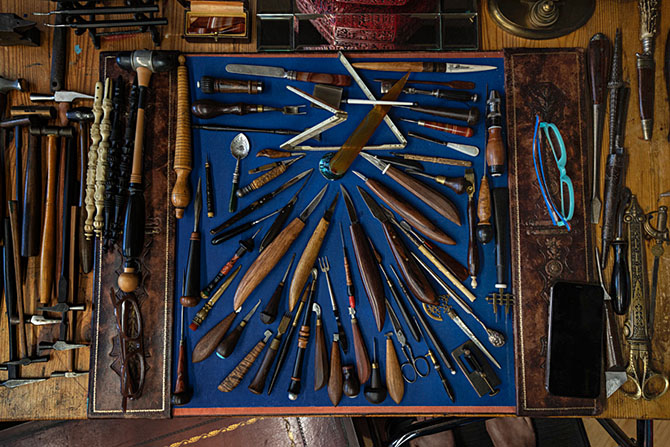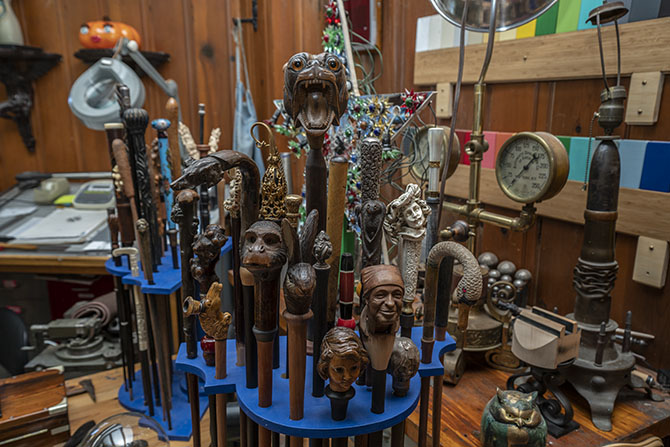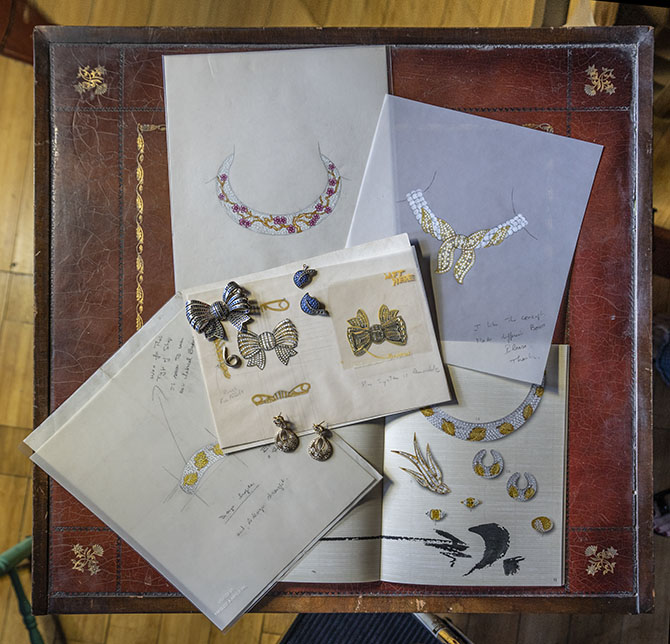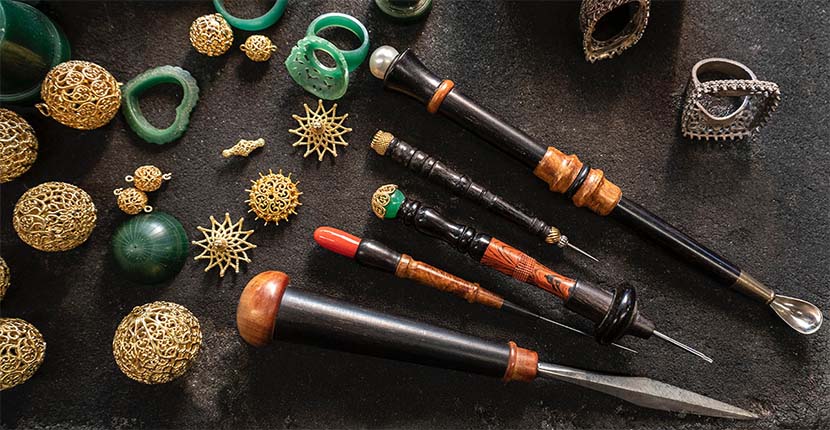One of my favorite questions to ask people is how they entered the world of jewelry, as their answers often involve unexpected twists, turns, and a great deal of passion. This multi-part feature on Jim Matthews is one of those stories.
Before I delve into the tale of Jim Matthews, the master jeweler from Abilene, Texas, and give you a glimpse into a lesser-known part of the jewelry industry where the stories are seldom told, it is important to understand the critical role artisans play in the creation of fine jewelry.
James de Givenchy, a renowned designer and the founder of Taffin and nephew of legendary couturier Hubert de Givenchy, once emphasized the significance of having his own workshop and craftsmen. He explained, “Controlling the finishing of pieces the way that I envision them is truly what gives a jewel its signature.” This statement makes sense when you consider that every craftsman has their own distinct approach.
Well, it was Jim Matthews who introduced James de Givenchy to the world of jewelry making back in the mid-1990s. When James resided in Los Angeles, he convinced Jim to teach him the ins and outs of the craft. Jim reminisces, “I immediately knew that James was worth my time because of his immense passion for it. I taught him everything from making custom tools, the wax carving process, to the final touches.”

Where it all begins…
Jim Matthews was born on November 9, 1941, in Abilene, Texas. His parents were a pawn shop owner and a horticulturalist – both creative individuals. So, was Jim’s talent innate or nurtured? It seems to be a combination of both.
By the age of 5, he was already carving wood and playing the violin. At 14, Jim embarked on an apprenticeship as a gunsmith to learn the art of decorative engraving. During high school, he played the bassoon and earned a full scholarship to Hardin-Simmons University in Abilene.
Jim’s path took a different turn when Timex opened a local plant, and he became a mechanical engineer. For 10 years, he focused on design development and overseeing the watch assembly. However, when Timex relocated elsewhere, Jim decided to stay in Abilene. At that point, a friend suggested that he utilize his skills in jewelry repair. Jim initially set up a workbench in his garage, and as demand grew, he established his own jewelry shop called Goldesign in 1981.
It was at this shop that Jim found his soulmate – or rather, she found him.

A love story within the story…
From an early age, Cynthia Bach knew she wanted to be a jewelry designer. Her father, a Lieutenant Colonel in the Air Force, gave her a small treasure chest as a child, which sparked her desire to fill it with beautiful things.
When Cynthia’s father was stationed at the Dyess Air Force Base in Abilene, Texas, she enrolled at McMurry University in order to stay close to her family. Although there wasn’t a jewelry course offered in the art department, Cynthia was undeterred. She rallied other students and convinced Bob Howell, one of the art instructors, that a jewelry course was necessary.
Once Cynthia felt confident in her skills, she sought out Jim’s store and requested an apprenticeship. They soon bonded over their shared appreciation for exquisite craftsmanship and historical designs, and their connection blossomed into love. Shortly after Cynthia graduated in 1982, the couple tied the knot. However, the proposal itself had a bit of a unique twist.
Initially, Cynthia proposed to Jim while he was working at the polishing machine. “I thought he was a great guy and loved jewelry, so I suggested we get married because it made practical sense,” Cynthia recalls. While Jim didn’t object to the idea of marriage, he wanted to formalize the proposal in his own way. A few weeks later, he popped the question with a ¾-carat diamond ring. Cynthia playfully responded, “No, we need to show off the goods!” Eventually, Jim returned with a 1.25-carat diamond, sealing the deal… for the moment.
As it turned out, Cynthia’s intuition about “showing off the goods” proved right. Over the years, she sold the engagement ring off her finger multiple times.

A call from New York…
Word of Jim’s exceptional talent as a jewelry bench artisan reached beyond the borders of Texas and caught the attention of New York City. To this day, Jim and Cynthia have no idea how it happened, but it happened. They received a call from a headhunter who was searching for someone to lead a workshop.
Initially, Jim had little interest in leaving the shop he owned and operated. However, when the headhunter mentioned a free trip to New York for an interview, he decided to give it a shot. The financial aspect also played a role in his decision. Recall Jim’s words, “When I asked, ‘how much does the job pay?’ The guy said it pays anything you want.”
The interview process was lengthy and involved several meetings with the headhunter. Jim returned to Texas and had to send in work samples. Then, he had to make another trip to New York without knowing who the potential employer was.
Eventually, it was revealed that the position was as the head of the Van Cleef & Arpels workshop in Los Angeles, where he would oversee 13 employees. Jim subsequently met with Philippe Arpels, a descendant of the firm’s founder, and the two hit it off.
Jim and Cynthia packed their bags and relocated to the City of Angels. Before their departure, they were interviewed by a local newspaper in Abilene. Describing the experience, Jim said, “I was just shellshocked—completely amazed. That was the first time I truly became interested, when I found out who it was and realized that it was the same house responsible for 75% of the jewelry worn by the Duchess of Windsor.”
The story of Jim and Cynthia’s journey in Los Angeles continues in the upcoming parts.

